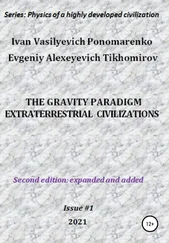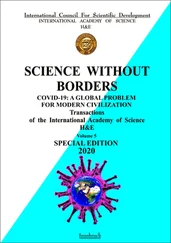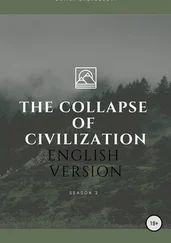The spread of Western Civilization to the non‐Western world enabled those previously more advanced civilizations to “modernize,” and liberate themselves from Western imperialism. By the beginning of the twenty‐first century, a modernized China, for example, was able to challenge the West for world leadership. Still, the world we live in is a Westernized world.
A number of individuals contributed to this project. Students of mine and parents who home schooled their children often asked why I did not write my own history textbook. Well, once I was able to retire, I finally had time to entertain such a challenge. Andrew J. Davidson helped me prepare the proposal for the project. Haze Humbert and Jennifer Manias served as Executive Editors, Janani Govindankutty, Niranjana Vallavan, and Ajith Kumar served as conscientious project managers, Kelley Baylis, Sakthivel Kandaswamy, and many others at Wiley‐Blackwell whose names are unknown to me, have played a role in bringing this project to fruition.
My wife Darlene and daughter Elizabeth Waibel edited the individual chapters as I wrote them, correcting grammar and making helpful stylistic suggestions. Former colleagues, friends, and family members contributed images, thus helping to keep the price of the book reasonable. Finally, I wish to thank four professors who imbued in me the love of history and the desire to teach and write history – Benjamin W. Wright, Jr., Clifton W. Potter, Jr., Sheldon Vanauken, and Robert P. Grathwol. A special debt of gratitude is owed to Sheldon Vanauken, who encouraged me to “live under the mercy,” and to whose memory I dedicate this book.
Part I Ancient and Classical Civilization: An Overview
The story of Western Civilization begins around 3500 bc in the area referred to by historians as the Fertile Crescent, a quarter‐moon shaped area that stretches from the Nile River valley, along the eastern coast of the Mediterranean Sea, and the river valleys of the Tigris and Euphrates rivers to the Persian Gulf. It was in that area of fertile soil that people learned to farm and irrigate their fields with water from the rivers. Settled farming required organization, which gave birth to the first cities. It was also there that people first learned to write. Organized agriculture and urban life gave rise to a class structure, in which most of the people performed certain tasks, producing the means of livelihood, while a few had the time to contemplate the meaning and purpose of life. Writing made it possible to record not only the mundane affairs of day‐to‐day life, but also what may be described as philosophical and religious speculation.
If one thinks of an axis around which civilization develops and radiates outward, that axis moved from the Fertile Crescent north‐westward to the area of the Aegean Sea, as civilizations appeared along the rim of the Aegean Sea on the island of Crete, the coast of Asia Minor, and the Greek mainland. The Minoan Civilization on Crete and the Mycenaean Civilization on the Greek mainland contributed to the development of classical Greek civilization after 800 bc. With the conquest of the Middle East by Alexander the Great (d. 323 bc) and his successors, the Greek language and humanistic civilization of classical Greece spread throughout the Middle East and Egypt.
The Romans imposed political and, to a degree, cultural unity on the whole Mediterranean world by the end of the second century ad. But, though the Romans conquered the Hellenistic world, they were in turn conquered culturally by the Greeks, thus spreading the Greek language and culture to the western Mediterranean. The axis of civilization shifted westward to the Italian peninsula. It was during the centuries‐long rule of Rome, that the religious thought of the ancient Hebrews and early Christians blended with the classical humanism of Greek civilization.
1 The Cradle of Civilization
Chronology
c. 8000–5000 BC Neolithic Agec. 3500 BC First Cities Appear in Sumerc. 3300–3100 BC First Writing Appears in Sumerc. 3100 BC Civilization Appears in Nile River Valleyc. 2500 BC Civilization Appears in Indus River Valleyc. 2150 BC Epic of Gilgamesh is Written Downc. 2100–2050 BC Code of Ur‐Nammu, Oldest Known Law Codec. 1900 BC Abram (Abraham) Leads Hebrews From Ur to Canaanc. 1754 BC Law Code of Hammurabic. 1500 BC Civilization Appears in Yellow River Valleyc. 1446 BC One Possible Date for Hebrew Exodus from Egyptc. 1393 BC Birth of Mosesc. 1270 BC One Possible Date for Hebrew Exodus from Egyptc. 1024–930 BC United Kingdom of Israel722 BC Assyria Conquers northern Kingdom of Israel587 BC Babylonians Capture Jerusalem, Fall of Kingdom of Judah
The story of Western Civilization began during the Neolithic Age (c. 8000 BC–5000 BC), before the appearance of civilization. Humans ceased being hunters and gatherers and began to domesticate animals and cultivate crops. Agriculture enabled human beings to take control of their environment rather than be controlled by it. A technological revolution followed. New tools to cultivate the land and clear forests appeared, along with methods of collecting, storing, and using water from the nearby rivers to irrigate fields. Agricultural centers, or villages, appeared consisting of a group of individuals living together, mutually dependent on one another. As agriculture spread, trade in surplus crops and necessary tools and resources followed.
Discoveries of certain of the Neolithic communities by archeologists are very revealing. Jericho, located in the Jordan valley, was first settled sometime between 10 000 and 9 000 BC. By around 9 400 BC Jericho occupied about 10 acres (4 ha). There were more than 70 circular dwellings made of sun‐dried brick measuring about 15 ft. (4.6 m) across. Estimates of the size of the population vary anywhere from 200 to 300 upward to 2000 or 3000. The village was surrounded by a stone wall more than 12 ft. (3.7 m) high and nearly 6 ft. (1.8 m) wide at the base. Inside the wall stood a stone tower more than 12 ft. (3.7 m) tall with an internal stone staircase. Outside the stone wall was a moat approximately 10 ft. (3.8 m) deep.
The wall served as a defense against potential enemies. The purpose of the tower remains shrouded in mystery. Two archeologists from Tel Aviv University, Roy Liran and Ran Barkai, after studying how the setting sun on the summer solstice interacted with the tower and the surrounding landscape suggest that “the tower was built not just as a marker or a time‐keeping device, but as a guardian against the dangers present in the darkness cast by a dying sun's last rays of light” (Sutherland 2018). The dead were buried within the village, often under the floor of the dwelling in which the deceased is assumed to have lived. The skulls were covered in plaster, painted, and placed in the walls. The practice may be evidence of some sort of ancestor worship, but like so much else, that explanation is speculation.
Even more interesting is the Neolithic settlement located in southern Anatolia (modern Turkey) called Çatalhöyük (sometimes spelled Çatal Höyük or Çatal Hüyük), which existed from approximately 7500 to 5700 BC. The site was discovered in the late 1950s and first excavated between 1961 and 1965. Excavations and research by an international team of archeologists began in 1993 and are ongoing.
With a population that ranged between 3000 and 8000, Çatalhöyük was much larger than Jericho. It consisted of about 32 acres (approximately 13 ha) of mud‐brick dwellings closely packed together without streets or alleyways. Access to the individual dwellings was through holes in the roofs. The life of the community took place largely on the roofs of what must have resembled a large beehive‐like structure. Each dwelling had an oven and furniture that consisted of mud‐brick platforms under which deceased family members were buried. The floors were covered in reeds. The walls were covered in bright white plaster, often decorated with colorful frescos. Paintings of bulls on the walls, plastered skulls of oxen embedded in the walls, and the presence of bull horns suggest some sort of religion centered on the worship of bulls, like the religion that appeared later in Minoan Crete (see Chapter 2). One scene painted on a wall depicts a village with a mountain, perhaps Mount Hasan, an inactive volcano. Some art historians regard the painting as the first painted landscape in history.
Читать дальше












